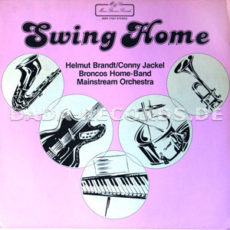
Daily Dose Of Jazz…
Conny Jackel was born Horst Konrad Jackel on August 30, 1931 in Offenbach am Main, Germany. He first worked as a steel fitter, then in 1951 he played at the conservatory and in the clubs of the US Army in France, the Netherlands and Germany in 1952. In 1955 he became a member of Helmut Brandt Combo, contributing to their success.
By 1959 Jackel had joined the Harald Banter Band in Cologne playing demanding arrangements for two years. In 1961 he joined the orchestra of Erwin Lehn in Stuttgart, where he also worked with Miles Davis, Chet Baker, Dizzy Gillespie and Frank Sinatra on stage.
From 1964 to 1969 he was a member of the Albert Mangelsdorff led Jazz Ensemble of Hessischer Rundfunk . From 1967 Conny played first trumpet in the Dance Orchestra of Hessischer Rundfunk under Willy Berking and the HR Big Band headed by Heinz Schönberger . In addition, he performed with Joki Friendand, Rudi Sehring, Attila Zoller and Charly Antolini. He recorded with Gustl Mayers Swing All Stars and the trio of Manfred Kullmann . Then he was a member of the jazz band Hanauer Sugarfoot Stompers and played with other traditional bands of the region such as the Phoenix Jazz Band.
In 1999 a bout with cancer caused Jackel to have his lower jaw removed forcing him to give up playing trumpet. Occasionally he would play drums as also in the Book Readers active as a drummer. For his contributions to jazz, he was inducted into the Knights of Ronneburg on September 9, 2006.
Trumpeter and flugelhornist Conny Jackel passed away after a long illness and the consequences of an operation on April 28, 2008 in Bad Nauheim, Germany.
![]()
More Posts: drums,flugelhorn,trumpet
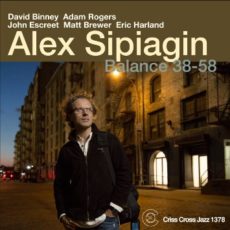
Daily Dose OF Jazz…
Alex “Sasha” Sipiagin was born June 11, 1967 in Yaroslavl, Russia. He began studying the trumpet at age 12, studying at the Moscow Music Institute and the Gnessin Conservatory in Moscow where he received his Baccalaureate. By 1990, he was a participant in the International Louis Armstrong Competition sponsored by the Thelonious Monk Institute in Washington D.C. where he won top honors.
Soon after Alex relocated to the jazz mecca of the world, New York City and soon became a favored player for various bands including the Gil Evans Orchestra, Gil Goldstein’s Zebra Coast Orchestra, the George Gruntz Concert Jazz Band, drummer Bob Moses’ band Mozamba, Mingus Big Band as well as the Mingus Dynasty and Mingus Orchestra, and the Dave Holland Big Band, Sextet and Octet groups.
In 2003 he recorded with Michael Brecker’s Quindectet touring also with the Michael Brecker Sextet. Sipiagin has also worked with Barbara Dennerlein, Eric Clapton, Dr. John, James Moody, Conrad Herwig, Aaron Neville, Elvis Costello, Michael Franks, Dave Sanborn, Deborah Cox, legendary producer Phil Ramone, Gonzalo Rubalcaba and many others.
Many of the recordings he has been a sideman have been nominated for or won a Grammy, as a soloist, Alex has recorded eleven recordings out to his credit, another four with Opus 5, and more than twenty-nine albums as a sideman. He has toured extensively throughout Europe, U.S., Japan and Russia with his own group.
As an educator he teaches at the Groningen Prince Claus Conservatory, Academy of Music, Basel, Switzerland as well holding a professorship at New York University.
![]()
More Posts: flugelhorn,trumpet
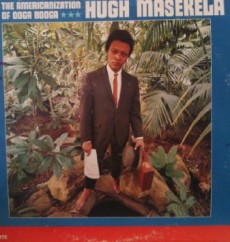
Daily Dose Of Jazz…
Hugh Ramopolo Masekela was born on April 4, 1939 in Kwa-Guqa Township of Witbank, South Africa. He began singing and playing piano as a child. At the age of 14, after seeing Kirk Douglas in the film Young Man With A Horn he took up playing the trumpet. He was given his first trumpet was given to him by anti-apartheid Archbishop Trevor Huddleston at St. Peter’s Secondary School.
Quickly mastering the instrument under the tutelage of Uncle Sauda of Johannesburg’s Native Municipal Brass Band, Masekela along with some of his schoolmates formed the Huddleston Jazz Band, South Africa’s first youth orchestra. By 1956, after leading other ensembles, he joined Alfred Hebrert’s African Jazz Revue.
In 1958 he wound up in the orchestra of South Africa’s first musical blockbuster King Kong, followed by touring the country for a sold-out year with Miriam Makeba and the Manhattan Brothers’ Nathan Mdledle in the lead. By the end of 1959 Hugh along with Dollar Brand, Kippie Moeketsi, Makhaya Ntshoko and Johnny Gertze formed the Jazz Epistles. They became the first African jazz group to record an album and perform to record-breaking audiences in Johannesburg and Cape Town.
Following the 1960 Sharpeville Massacre of 69 peacefully protesting Africans he left the country with the help of Huddleston, Yehudi Menuhin and John Dankworth for London’s Guildhall School of Music. Befriended by Harry Belafonte on a visit to the U.S. he gained admission to Manhattan School of Music studying classical trumpet.
By the late Sixties he had hits with Up, Up & Away and Grazing In The Grass, appeared at the Monterey Pop Festival, and was featured in the film Monterey Pop. In 1974, Masekela and friend Stewart Levine organized the Zaire 74 music festival around the Rumble In The Jungle boxing match.
He has played primarily in jazz ensembles, with guest appearances on recordings by The Byrds and Paul Simon. Since 1954 Hugh’s music protested about apartheid, slavery, government and the hardships individuals were living but also vividly portrayed the struggles and sorrows, as well as the joys and passions of his country. In 1987, he had a hit single with Bring Him Back Home, which became an anthem for the movement to free Nelson Mandela.
Trumpeter Hugh Masekela also plays the flugelhorn, cornet, and trombone and is a composer and singer. He has some four dozen albums to date in his catalogue, has won two Grammy Awards with seven nominations, received two honorary doctorates, and serves as a director on the board of The Lunchbox Fund, a non-profit organization that provides a daily meal to students of township schools in Soweto. He continues to perform, record and tour.
![]()
More Posts: cornet,flugelhorn,trombone,trumpet
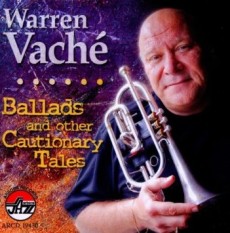
Daily Dose Of Jazz…
Warren Vaché, born February 21, 1951 in Rahway, New Jersey came from a musical family. His father was a bassist, author of several jazz books and a critic, while his mother was a secretary at Decca Records. He began playing piano in the third grade but soon switched to trumpet so he could play in the fourth grade band and his father immediately bought him a cornet.
Over the years Warren has looked to Louis Armstrong, Roy Eldridge, Bobby Hacket, Fats Navarro, Tom Harrell and Ruby Braff as his sources of inspiration. Throughout high school and while attending Montclair State College he played gigs from dance to weddings and all kinds of receptions.
Part of his formal training by studying under Pee Wee Erwin and continued with him playing in polka, Dixieland, big dance and Broadway pit bands, as well as small jazz groups and large free-wheeling combos.
His first professional job was with the Billy Maxted band in Detroit in 1972. From there he ventured on to play th Broadway production of Mr. Jazz, work with George Wein and finally landing in Benny Goodman’s band. There he played with Hank Jones, Urbie Green, Zoot Sims and Slam Stewart.
He became part of the Condon’s house band, had his debut release, First Time Out on the Monmouth label, but Concord Records gave him his biggest exposure working with Scott Hamilton, John Bunch, Jake Hanna and Cal Collins. He has also worked with Bucky Pizzarelli and Howard Alden.
Swing master cornet, flugelhorn and trumpeter Warren Vaché currently maintains a full schedule of recording, worldwide festivals appearances, Broadway and club dates.
More Posts: cornet,flugelhorn,trumpet
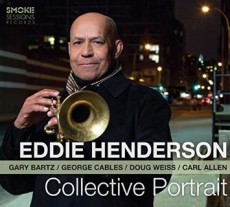
Daily Dose Of Jazz…
Eddie Henderson was born on October 26, 1940 in New York City. His mother was an original Cotton Club dancer and his father sang with a popular singing group of the day, Billy Williams and The Charioteers. At the age of nine he got an informal lesson by Louis Armstrong and continued his study of the instrument as a teenager at the San Francisco Conservatory of Music, after his family moved there in 1954. As a young man, he performed with the San Francisco Conservatory Symphony Orchestra. In 1957 he met Miles Davis, a friend of his parents and played a gig together when he was just 17.
After three years in the Air Force, Henderson enrolled at the University of California, Berkeley graduating with a B.S. in zoology in 1964. He then studied medicine at Howard University, then went back to the Bay area undertook his residency in psychiatry in 1968, he practiced general medicine from 1975 to 1985 in San Francisco part-time for about four hours a day working at a small clinic.
His break in music came when he took a weeklong gig with Herbie Hancock’s Mwandishi band that led to a three-year job. It was during this period in the early 70s that her recorded three albums with the group but more importantly came out as a leader and recorded his debut album Realization followed by Inside Out.
After leaving Hancock, Eddie worked extensively with Pharoah Sanders, Mike Nock, Norman Connors, and Art Blakey’s Jazz Messengers. He joined Latin jazz band Azteca, recorded with Charles Earland and fronted his own bands, both jazz and rock-oriented. However, recognized for his work with Hancock, his own records were considered too commercial.
By the 1990s, Henderson returned to playing acoustic hard bop, touring with Billy Harper while also working as a physician. He recorded at Miles tribute album So What? with Bob Berg, Dave Kikoski, Ed Howard and Victor Lewis. He has collaborated with his wife Natsuko who composed Tender You, Precious Moment, Around the World in 3/4 and Be Cool.
As an educator trumpet and flugelhorn player Eddie Henderson has been a faculty member of Juilliard since 2007 and is Associate Professor of Trumpet at the Oberlin Conservatory Jazz Department, beginning in 2014. He has recorded 23 albums as a leader, has released two anthologies, and recorded nearly four-dozen sessions as a sideman with Benny Golson, Mulgrew Miller, Richard Davis, Gary Bartz, Leon Thomas, Billy Hart, McCoy Tyner, Mal Waldron, Stanley Cowell, Grover Washington, Jr., Kenny Barron, Joe Farnsworth and the Mingus Big Band to name a few.
More Posts: flugelhorn,trumpet


